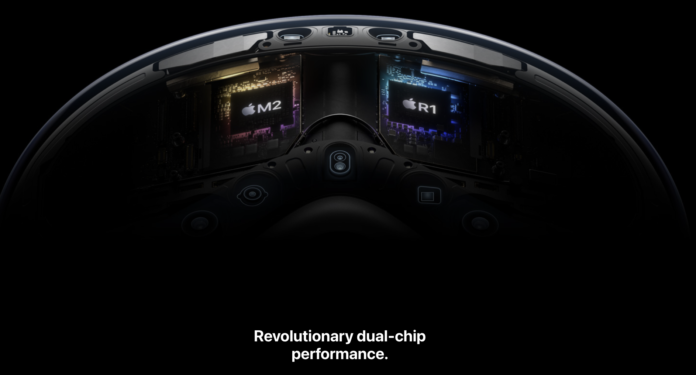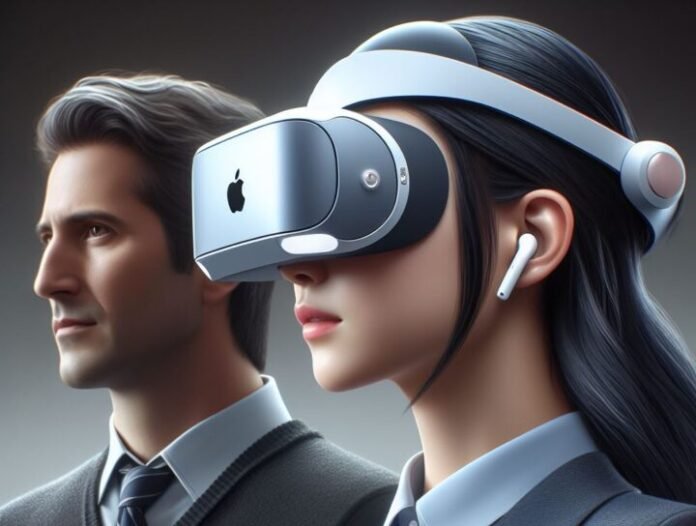The year is 2023, and Apple unveils its highly anticipated foray into the world of spatial computing: the Apple Vision Pro. With promises of revolutionizing how we interact with the digital realm, the Apple Vision Pro sparked excitement and curiosity among tech enthusiasts worldwide. While it undeniably offers a glimpse into the future and boasts impressive features, it’s important to remember that it’s still a first-generation product, facing challenges inherent to any pioneering technology.
Contents
Stepping into a New Reality: Immersion Redefined
Putting on the Apple Vision Pro feels like stepping into a meticulously crafted, high-resolution world. Apple boasts a groundbreaking display system, with two micro-OLED displays packing a combined 23 million pixels – each the size of a postage stamp – delivering stunning visuals with wide color and high dynamic range (HDR) support. This, coupled with the innovative eye and hand tracking technology, creates an immersive experience unlike anything experienced before with traditional VR headsets.
Unlike its competitors, the Apple Vision Pro leverages groundbreaking passthrough technology. This ingenious feature allows users to see the real world through the headset, seamlessly blending the physical and digital environments. Imagine collaborating with colleagues in a virtual workspace while still being able to see your real-world surroundings for quick reference, or learning a new skill while keeping an eye on your surroundings – the possibilities are endless.

Seamlessly Integrated Within the Apple Ecosystem
For Apple users, the Vision Pro becomes an extension of their existing ecosystem. The device integrates effortlessly with other Apple products, unlocking unique features like Mac Virtual Display. This allows you to extend your workstation into the headset, creating a truly immersive and portable workspace. Additionally, FaceTime takes on a whole new dimension with the Vision Pro. Users can engage in virtual meetings with life-like avatars that maintain eye contact during conversations, fostering a more natural and engaging experience.
Growing Pains: Challenges on the Road to Innovation
While the Apple Vision Pro boasts impressive features, it’s crucial to acknowledge its limitations. As with any first-generation product, there are challenges that need to be addressed. While the app selection is promising, it’s currently limited, lacking popular platforms like YouTube and Netflix. This can be a significant drawback for users seeking a more comprehensive entertainment experience.
Furthermore, while the sleek design is aesthetically pleasing, it comes at the cost of weight. The current design can lead to discomfort during extended use, which might hinder user adoption and enjoyment. Additionally, the “EyeSight” feature, designed to allow others to see what the wearer is focusing on, raises questions about practicality. While it’s a commendable attempt to maintain social connection in a virtual space, the limited visibility and the slightly unnatural feeling of eye contact might not translate well in real-world scenarios.

A Fun Toy with Untapped Potential: Who is the Apple Vision Pro For?
Despite its limitations, the Apple Vision Pro undeniably holds appeal for tech enthusiasts and early adopters. It excels in specific situations – editing videos while traveling, attending virtual meetings in a more engaging way, or simply exploring the potential of this new technology. However, the current price tag, coupled with the presence of more established (albeit less feature-rich) competitors in the market, positions it as a niche product at this stage.
A Glimpse into the Future: What Lies Ahead?
While the Apple Vision Pro might not be the revolutionary device it initially set out to be, its significance lies in its ability to offer a valuable glimpse into the future of computing. The innovative features, seamless integration within the Apple ecosystem, and the sheer potential of spatial computing showcased by the Vision Pro spark excitement for what lies ahead. As the technology matures, the app ecosystem expands, and user experience continues to be refined, future iterations of the Vision Pro have the potential to truly redefine how we interact with the digital world.
The future of computing is here, but is it ready for everyone?
As technology continues to evolve at a rapid pace, the answer remains to be seen. One thing is certain, however: the Apple Vision Pro, with its strengths and weaknesses, has laid down a significant marker in the ever-evolving landscape of spatial computing. The journey has just begun, and only time will tell where this path leads us.
Thank you for reading! What are your thoughts on the Apple Vision Pro? Do you think it’s a sign of things to come, or is it just a first-generation stepping stone? Share your thoughts in the comments below!


